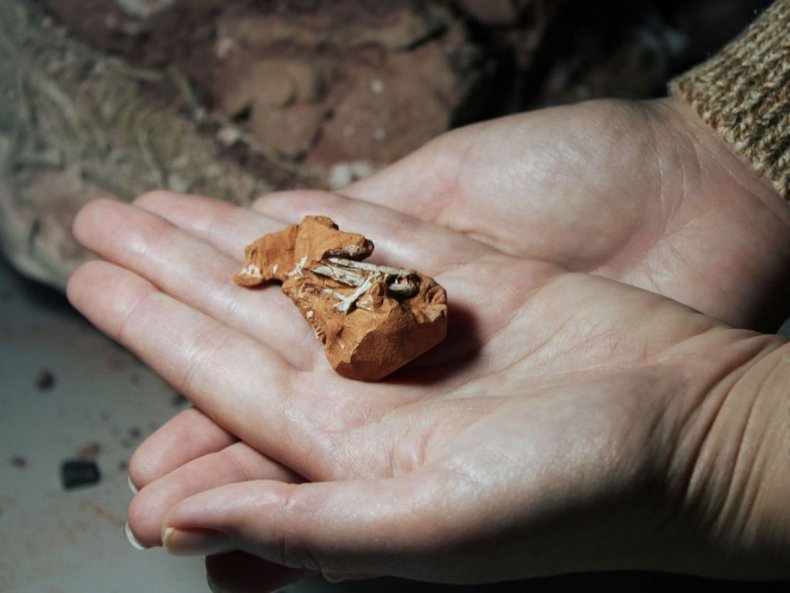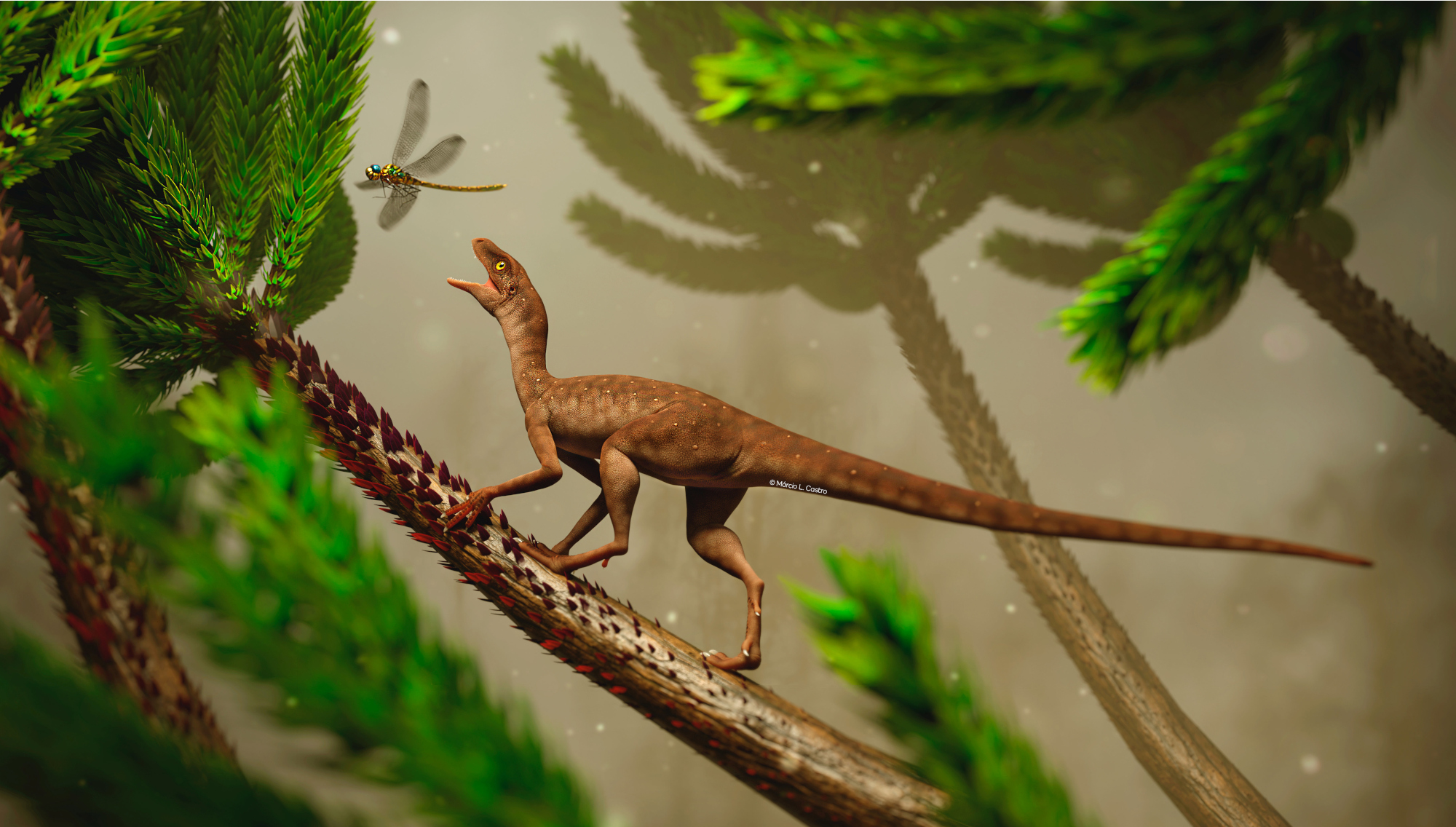A 225-million-year-old tiny reptile was the ancestor of the flying giants: Research
A tiny 225 million year old reptile unearthed in Brazil gave birth to the largest creatures that have ever flown, according to new research.
The lizard-like species measured just 15 inches from nose to tail. It is a “missing link” in the evolution of pterosaurs which reached the size of airplanes. Appointed maehary bonaparteit will shed new light on how giant predators got their wings.
“We hope so. Pterosaurs were flying reptiles even before birds. But the earliest origins of wings are still poorly understood,” said paleontologist Rodrigo Muller of the Federal University of Santa Maria in Brazil.
Marcio L. Castro, SWNS/Zenger
Pterosaurs ruled the skies for 150 million years. They were close cousins of dinosaurs that evolved on a separate branch of the reptile family tree.
“Maehary is the most basal in the line of greatest flying animals that ever lived,” Muller said.
He belonged to a group of two-legged, wingless ancestors called lagerpetids that trotted around the supercontinent Pangea. The primitive animal fills a vital gap in the fossil record. It was placed at the root of the pterosaur family tree.
A skull, jawbone, shoulder blade and teeth have been unearthed at a prehistoric animal cemetery in Rio Grande do Sol, southern Brazil. Remains, including vertebrae, of another even smaller reptile called Faxinalipterus minimus were excavated at the same time. The remarkably preserved bones were buried in rocks from the Upper Triassic, a period of evolution hotly debated by paleontologists due to a meager fossil record.
“They lived about 8 million years after the ‘rise of the dinosaurs’ – living side by side with them. Fossil records of carnivores from strata 225 million years old are scarce. We believe they were hunted by fast and agile theropods – early ancestors of T Rex. Primitive crocodiles would also have eaten them – if they could catch them. Similarly, fossils of such animals are rare,” Muller said.

Marcio L. Castro, SWNS/Zenger
“The skull of Faxinalipterus is unknown, so its diet is uncertain. Conversely, Maehary’s teeth appear to be related to an insectivorous diet. They lived in an environment dominated by crested lizard-like reptiles called Tuataras and de tiny mammalian ancestors called cynodonts. The first of the long-necked dinosaurs that grew over 12 feet tall appeared in these ecosystems,” Muller added.
CT scans showed both species to be wingless. The dentition pattern and the close spacing between the cavities were not compatible with pterosaurs.
“However, we are familiar with the pterosaur wing formed from the elongation of the fourth finger of the forelimb. It is basically a giant, elongated finger. As the hand bones of the pterosaur arms have evolved to fly, they got longer – and the equivalent of our ring fingers became extraordinarily long,” Muller said.
Pterosaurs were among nature’s most successful animals. They ate fish and small animals. Many had hooked claws and sharp teeth which they used to grab their prey. Quetzalcoatlus was the most massive. As big as a giraffe, it had thin, hollow bones, a terrifying beak and a wingspan of 40 feet.
It was killed 66 million years ago, along with other pterosaurs and the non-avian dinosaurs, when a city-sized asteroid crashed into Earth, creating the Chicxulub crater on the coast of Mexico’s Yucatan Peninsula. Using an anatomical database, the Brazilian team established that Faxinalipterus was closely related to lagerpetids, including Maehary, which are “sisters” of pterosaurs. Together they all form a larger group called Pterosauromorpha, of which Maehary is the most primitive.

Marcio L. Castro, SWNS/Zenger
“That is, Faxinalipterus and Maehary are not pterosaurs, but are related to them. Maehary is uniquely set up as a key element in elucidating how anatomical features evolved along the lineage to ‘to the pterosaurs themselves – fully adapted for flight. These species, with an estimated length of 30 centimeters (12 inches) for Faxinalipterus and 40 centimeters (15 inches) for Maehary, demonstrate the importance of continuing to collect fossils in this region,” Muller explained.
The genus name of the new species comes from Ma’ehary, an expression of the indigenous Guarani-Kaiowa people of southern Brazil and Paraguay. It means “who gazes at the sky”, escaping its position in the evolutionary line of pterosaurs.
Muller and his colleagues are now looking for new discoveries to understand how the first vertebrates to evolve flapping flight came to be. The first were miniature compared to their gigantic descendants, with a wingspan of less than 3 feet. Only a handful of lagerpetid fossils exist due to their fragile bones. Brain characteristics suggest increased agility, which they passed on to pterosaurs.
Produced in collaboration with SWNS.
This story was provided to Newsweek by Zenger News.


Comments are closed.